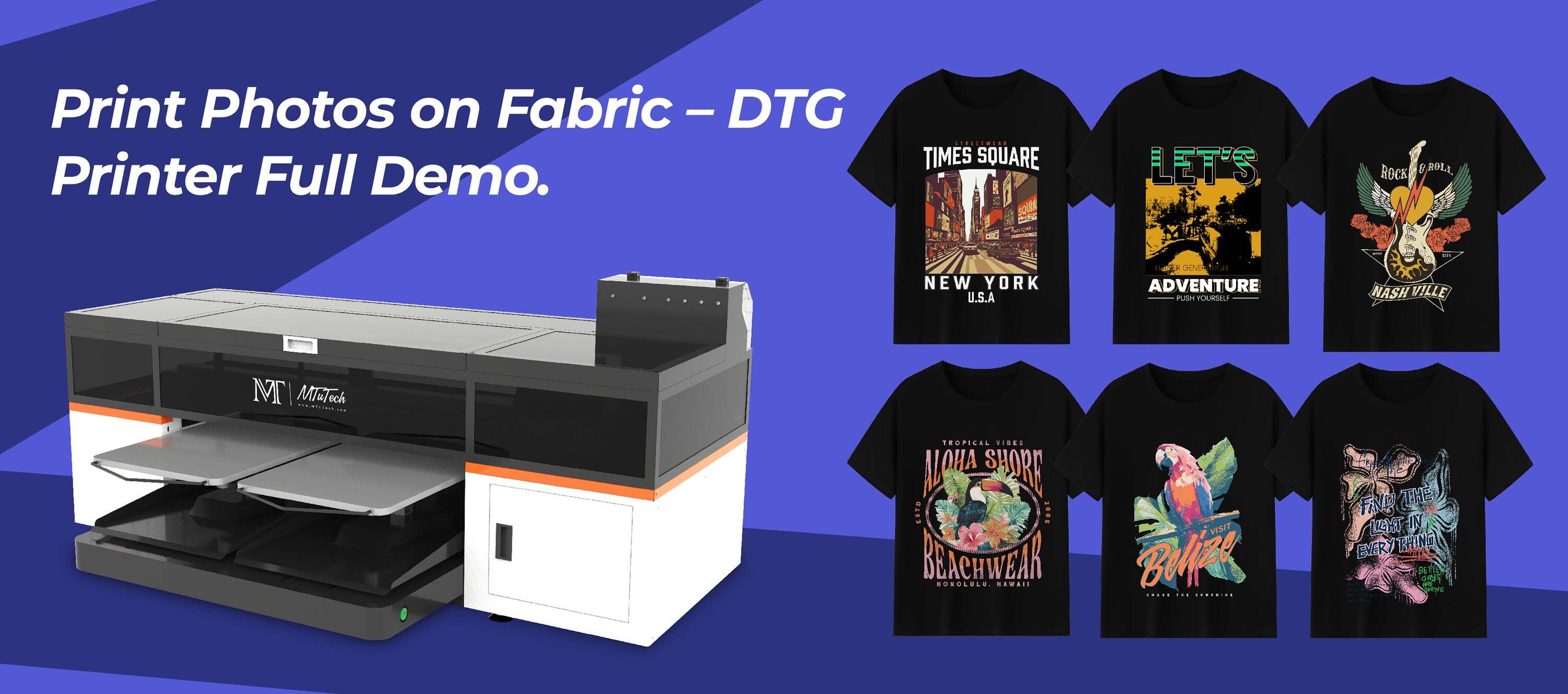Introduction
When it comes to garment decoration, printing and embroidery represent two primary techniques. Direct-to-Garment (DTG) Printing and Embroidery might seem similar, especially to someone from the non-industry background, but rest assured they are entirely different in terms of processes, budget, visual appeal, and the markets they serve. Understanding these differences is crucial for executing your design projects effectively. This guide will explore the key characteristics and differences between DTG printing and embroidery, plus some pointers on when to use each technique.
Direct-to-Garment (DTG) Printing
What is DTG?
Direct-to-Garment or DTG is a relatively modern method of printing that involves printing an image directly onto textile materials. It entails utilizing inkjet technology to print your design onto the garment. The simplified mechanics of DTG printing allow for finer details to be captured, making it a perfect choice for intricate, multi-color designs.
Benefits of DTG Printing
Detail and Color: Since DTG printing utilizes inkjet technology, it has the potential to print highly detailed designs of virtually any color palette.
Turnaround Time: DTG printers can create finely detailed, colored designs in much less time due to a simplified process that eliminates the need for setup or screens.
Flexibility: With almost no setup required, printing one-off designs or small runs is highly cost-effective.
Embroidery
What is Embroidery?
Embroidery is an age-old technique that involves creating designs on fabric using a needle and thread. High-speed, computer-controlled machines are currently used for skilled embroidery, enabling you to create the most intricate designs with precision.
Benefits of Embroidery
Finish and Durability: Embroidery offers a high-end finish and is renowned for its sturdiness. Designs will last a long time, showcasing quality and making it perfect for logos and branding.
Professional Appeal: Embroidery tends to carry a perception of high value, making it favored for corporate apparel, team uniforms, and other professional wearables.
Adaptability: Embroidery is extremely versatile and can be applied on a variety of fabrics, including those hard to print on.
Key Differences between DTG Printing and Embroidery
Here are some of the main contrasting features between these two methods:
Design complexity: DTG excels in producing highly detailed and color-intensive designs. On the other hand, embroidery works best on simpler, less colorful designs because of its thread-based process.
Cost: DTG generally has lower setup costs for small runs in comparison to embroidery which usually has higher digitizing and setup costs.
Product Longevity: Embroidery is highly durable and withstands washing better than DTG.
Feel: While DTG feels virtually weightless on the fabric, embroidery adds depth and texture.
Choosing between DTG and embroidery will ultimately depend upon your design's complexity, budget constraints, the material to be used, and your end product's desired look and feel. It is advisable to consult with a printing professional who can provide expert guidance based on your specific needs.
Conclusion
In an expanding and competitive market, choosing the right apparel decoration method can significantly impact the longevity, aesthetic appeal, and ultimate success of the product. Whether it's the fine details achievable with DTG printing or the professional touch brought by embroidery, align your choice with the demands of the design and target audience. For discovering how DTG can turn your design dreams into a reality, explore our high-quality DTG printers here.
FAQs
What’s the difference between DTG printing and embroidery?
While both DTG and embroidery are popular apparel decoration methods, they have distinctive differences. DTG printing involves using inkjet technology to print intricate, multi-color designs directly onto the garment, offering quick turnaround times and cost-effective small runs. In contrast, embroidery involves stitch-based designs more sustainable, offers a high-quality finish, creating a perception of value, ideal for corporate and professional clothing.
Which is better for intricate designs: DTG or embroidery?
DTG printing is better suited to intricate designs due to its ability to produce highly detailed and color-intensive designs using inkjet technology. Embroidery is suitable for simpler designs with less color, as it uses a thread-based process.
Is DTG cheaper than embroidery?
In most cases, DTG can be cheaper than embroidery due to lower setup costs for small runs. However, the cost can vary based on factors like the complexity of the design, size, and quantity.
Which technique lasts longer, DTG or embroidery?
Embroidery is known for its durability and tends to outlast DTG printing when it comes to washing and regular wear and tear. However, with proper care, both methods can offer long-lasting results.

